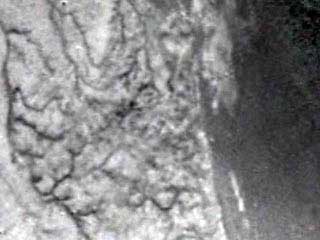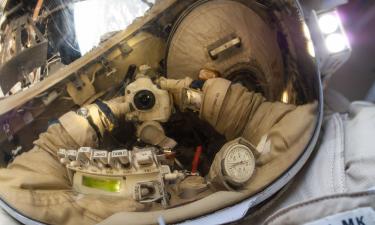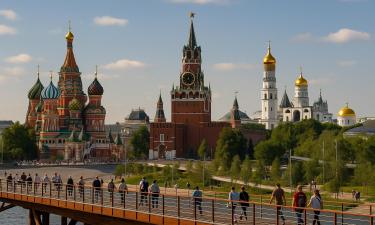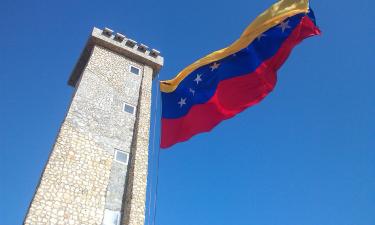Saturn's Titan to become inhabited in distant future
Saturn's most mysterious moon, Phoebe, is 110 kilometers in radius
Having spun off the Cassini mother ship, European probe Huygens landed on Titan, Saturn's largest moon. Titan bears the largest resemblance to Earth's physical features among all other celestial bodies of the Solar system. Huygens is not likely to come across extraterrestrial beings on Saturn's moon, but the probe will be able to learn more about the origin of life on planet Earth. Scientists all over the world were thrilled with the information that the probe transmitted from Titan. 
Titan's radius exceeds the radius of Earth's Moon 1.5 times – it is larger than Mercury. Titan's nitrogen atmosphere is filled with methane fog, which makes it similar to Earth. The orange-colored surface of the moon is hidden from view beneath thick clouds. Titan's atmospheric temperature reached 200 degrees below zero, the surface temperature is 178 degrees – only four degrees higher than the temperature of methane triple point. Planet Earth has a similar physical feature with water: water can exist in three states on Earth at zero temperature and normal pressure.
Huygens's photographs confirm the theory about the existence of methane rivers and seas on Titan. It is one of the most important results of the mission. Titan's soil is reminiscent of the Earth's ground: it is covered with thin crust that reminds wet sand or clay; it also contains ice and hydrocarbons.
Titan, therefore, bears some resemblance to Earth 4.6 billion years ago. Light turns methane to ethane, acetylene, ethylene and cyanic acid salt (in combination with nitrogen). These chemicals are vital for amino acids, which makes life on Titan possible to appear in remote future. It does not mean that primary microorganisms exist on Saturn's moon, although Titan's conditions are not hellish in comparison with other celestial bodies of the Solar system.
Mother ship Cassini carries a computer disk, which contains 600,000 messages and people's autographs from 81 countries of Earth. It took NASA two years to collect the messages through the Internet. The disk even contains US senators' signatures and Chuck Norris's autograph.
”It is very important to explore Saturn and Titan. The new information will help us learn more about the origin of life on planet Earth. The project is being carried out by Europe and the USA. Russia stays out of it, but we highly value this mission anyway. The project would be too expensive for Russia. Our current space policy is limited with near-Earth satellites,” specialist of the Space Exploration Institute of the Russian Academy of Sciences, Alexander Zakharov said.
Saturn is situated far from the Sun, which makes traditional solar batteries useless for a spacecraft. Cassini is outfitted with a nuclear reactor, which carries 33 kilos of plutonium-238. The USA has already launched about 30 nuclear-powered spacecrafts before. Radioactive materials are placed in ultrastrong capsules. Russian space engineers used to develop and launch nuclear-powered spacecrafts years ago. As long as Russia has no goals to pursue in remote space, the nuclear branch of Russia's space activities does not exist anymore.
Huygens transmitted hundreds of images of Titan's orange surface covered with ice boulders. Several pictures clearly depict systems of canals flowing into dark liquid - most likely liquid methane.
Saturn owns largest and most distinct rings in the Solar system. Other giant planets have rings too – Jupiter, Uranus and Neptune. Their rings look ridiculous against the background of Saturn's impressive ring system. The planet was named so in honor of the Greek god, who devoured his own children.
Little was known about Saturn's eleven moons before 1980. America's Voyagers discovered three other moons, when the probes reached the planet. Powerful telescopes found 12 other satellites later. The planet currently has 33 moons (discovered as of August 2004), but the list is most likely incomplete. Saturn's most mysterious moon, Phoebe, is 110 kilometers in radius. Scientists believe that Saturn seized Phoebe from beyond the Solar system, where most distant planets were formed. If the theory is confirmed, scientists will obtain important information about the origin of planets on the borders of the Solar system.
Subscribe to Pravda.Ru Telegram channel, Facebook, RSS!




